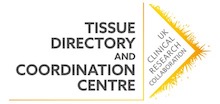Public Involvement in a Pandemic
One of the things I miss about pre-pandemic life is being able to go to meetings and events to meet with likeminded colleagues. Luckily technology is bridging the gap well and interactive events are getting better! On the 13th January I joined the Health Research Authority (HRA)’s session on public involvement in a pandemic. Over 250 people joined the session from various backgrounds and walks of life. Juliet Tizzard (Director of Policy and Partnerships) opened the event by giving a background to the report they recently published on the UK COVID-19 public involvement matching service.

It's always time for public engagement
We heard about the HRA’s quick response to the pandemic. They introduced a fast-track approval service for COVID-19 research. Jim Elliot, (Public Involvement Lead) described how this reduced the time considerably, from approximately 62 to 5 days. The inclusion of public involvement, however, had dropped, from about 80% of applications to 22%. The feeling was that it was low priority amid an emerging health threat.
The HRA were immediately alarmed and hosted a workshop in April 2020 to dissect the issue. They heard that research teams were making incorrect assumptions about the motivation and availability of the public and that there was not time to include public involvement. In fact, the opposite was true, said Jim Elliot, and leadership was needed. Leni Sivey (Public Involvement Manager) then introduced the HRA’s “dating service” which acts as a small bridge between the fast-track approval process and public involvement groups and networks.
Public involvement dating service
Leni tapped into existing public and patient and patient groups and networks. The response was phenomenal, with 56 different groups composing of over 800 patients and members of the public volunteering. Volunteers provided top level information on location, age, ethnicity and type of lived experience. This was to aid in matching the volunteers with research projects. Researchers provided a similar summary of their projects for example; type of involvement needed, number of people, relevant lived experience and research timeline.
In the end, 22 different research teams applied and were supported by 13 public involvement groups. The matching service did well at complementing existing support but sometimes came late in the planning process. The key take home message was that including the public is not just a nice to have, it’s an important, expected and possible element of research in any circumstance.
Question time
Following comments from a diverse and engaging panel, there was time for a few questions.
First: “How have you managed to support public involvement for people who can't or don't use the internet at a time when we are more Zoom-dependent than ever?”
Bec Hanley (Charities Research Involvement Group) answered by saying they were concerned as a group of charities about involvement, so have tried a few things including: teleconferences, phoning individuals, when it was safe meeting outside 1:1, and sourcing funding for smartphones, tablets, and laptops. She added that it’s not necessarily equipment that’s a problem but funding to get online. Bec has also co-produced guidance on using Zoom.

Second: “To what extent were the groups matched to diverse groups (ethnicity/socioeconomic/carers etc), and what did you learn about engaging with diverse groups?”
Jim Elliot answered by saying they found difficult specific issues, for example they don’t collect information from people with specific lived-experience. He added that very few groups had information on COVID-19 experience. He concluded that they managed to find people from different backgrounds but it was and continues to be a challenge.
The future of public involvement
Finally, the panel were asked for their top wishes for the future. They each gave a 30 second response:
-
- “There were 5 key gaps referenced in report – I’d like us to work together as a community to solve those in non-COVID research”;
- “Harness the raised awareness of the importance of public involvement”;
- “There should be no research applications without public involvement”;
- “If you want to know what’s important to patients you have to ask them, it needs to be the norm. Let’s make public involvement the normal”;
- “It needs to be seen and treated as good research practice”;
- “I’d like to see more diversity involved, better communication and the major funders need to require it on grant applications”;
- Let’s expand the marketing techniques to include more people- get the message out there.”
You can read the HRA report and watch the launch session.
Do you have any public involvement best practice you’d like to share? Contact us to let us know your PPI tips.
